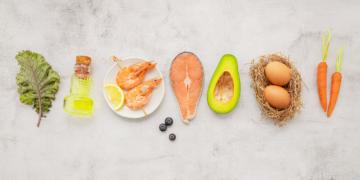Growing fruit trees in your backyard is not only a rewarding hobby but also a sustainable way to enjoy fresh, organic produce. Whether you have a large, sprawling yard or a small urban space, there are many fruit trees suitable for every garden. Some varieties thrive in large spaces, while others can flourish in containers on patios or balconies. In this comprehensive guide, we’ll explore the top fruit trees you can grow, how to care for them, and which varieties are best suited for your specific space. With a bit of care and attention, you can transform your garden into a thriving orchard.
Why Grow Fruit Trees in Your Backyard?
Fruit trees offer a variety of benefits beyond just providing delicious fruit. They can enhance your landscape, attract pollinators, and improve the environment by reducing carbon dioxide in the air. Moreover, growing your own fruit reduces the need for store-bought produce, which often contains pesticides or is shipped long distances. By planting fruit trees, you contribute to a more sustainable, eco-friendly lifestyle while enjoying fresh fruit at home.
Beyond sustainability, fruit trees are relatively easy to care for once established, making them suitable for beginner and experienced gardeners alike. With careful selection of species, you can grow trees that are low-maintenance, high-yield, and suited to your specific climate.
Choosing the Right Fruit Trees for Your Backyard
Before diving into specific varieties, it’s important to consider a few factors when choosing fruit trees for your garden:
- Climate: Some fruit trees, like apples and cherries, require a certain number of chill hours (cold weather) to produce fruit. Others, like citrus, thrive in warmer climates. Choose trees that are suited to your local growing conditions.
- Space: Consider how much space you have. Dwarf and semi-dwarf varieties are perfect for small gardens or even containers, while standard-sized trees need ample room to grow.
- Pollination needs: Some trees, like apples and cherries, require cross-pollination from a different variety to produce fruit. Others, like figs and peaches, are self-pollinating and only need one tree.
Now, let’s explore some of the best fruit trees for every garden size, from spacious backyards to compact patios.
Top Fruit Trees for Large Gardens
1. Apple Trees
Apple trees are a classic addition to any backyard orchard. With dozens of varieties available, they can thrive in a range of climates. Apple trees come in standard, semi-dwarf, and dwarf sizes, so even smaller spaces can accommodate these productive trees. Popular varieties like ‘Honeycrisp’ and ‘Granny Smith’ offer crisp, delicious fruit. Apple trees typically require cross-pollination, so it’s best to plant two different varieties for optimal fruit production.
Care Tips:
- Plant in full sun and well-draining soil.
- Water regularly, especially during dry periods, but ensure the soil doesn’t stay waterlogged.
- Prune annually in the winter to maintain shape and encourage fruit production.
- Fertilize in early spring with a balanced fertilizer to promote growth.
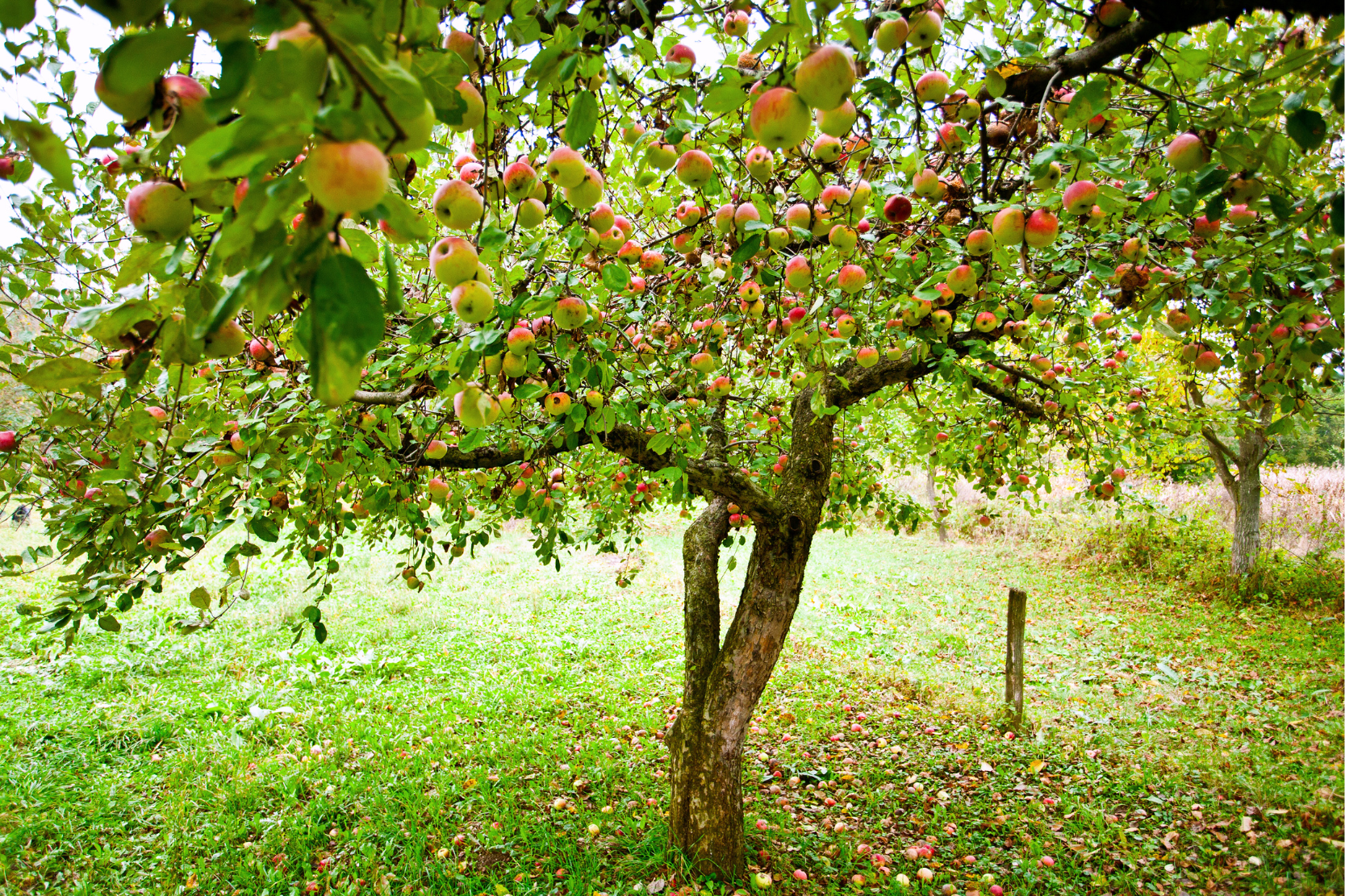
2. Pear Trees
Pear trees are another excellent choice for backyard gardens, offering sweet, juicy fruit that is perfect for fresh eating or preserving. Popular varieties like ‘Bartlett’ and ‘Bosc’ are known for their reliable fruit production. Pear trees are relatively low-maintenance once established and can grow in both standard and dwarf forms. Like apples, most pear trees require cross-pollination, so plant at least two different varieties for a healthy yield.
Care Tips:
- Plant in full sun with well-drained soil.
- Water regularly, but allow the top layer of soil to dry between waterings to prevent root rot.
- Prune in late winter or early spring to remove dead wood and promote healthy growth.
- Thin the fruit in early summer to encourage larger, healthier pears.

3. Plum Trees
Plum trees are easy to grow and produce an abundance of sweet, juicy fruit. Varieties like ‘Santa Rosa’ and ‘Damson’ are popular for their reliable yields and versatility in the kitchen. Plums are great for fresh eating, making jams, or even baking. Some plum trees require cross-pollination, while others, like ‘Santa Rosa’, are self-fertile.
Care Tips:
- Plant in a sunny location with good air circulation.
- Water deeply once a week during dry spells, especially when the fruit is developing.
- Prune annually in late winter to maintain shape and remove any diseased wood.
- Fertilize in early spring with a slow-release, balanced fertilizer.

4. Peach Trees
Peach trees are a rewarding addition to larger gardens, offering sweet, juicy peaches during the summer months. Varieties like ‘Elberta’ and ‘Redhaven’ are hardy and produce fruit within a few years of planting. Peach trees require full sun and regular pruning to encourage healthy growth and fruit production.
Care Tips:
- Plant in full sun with well-draining soil.
- Prune annually in late winter to maintain an open shape and encourage fruit production.
- Thin the fruit early in the season to ensure larger peaches come harvest time.
- Water regularly during dry spells, especially when the fruit is developing.
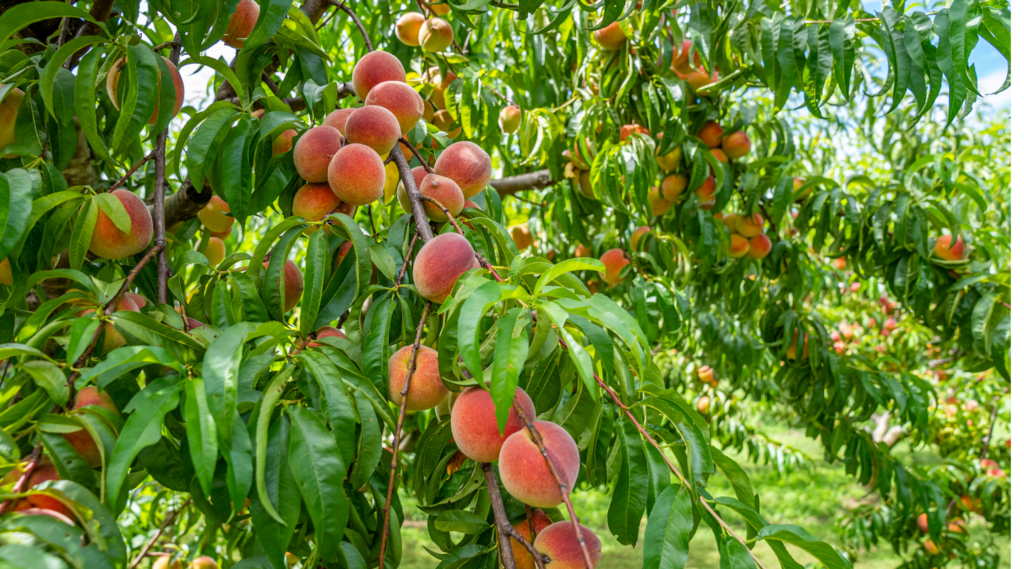
Top Fruit Trees for Small Gardens and Patios
5. Dwarf Apple Trees
If you have limited space, dwarf apple trees are an excellent choice. These compact trees grow to about 8-10 feet tall and produce full-sized apples. Varieties like ‘Honeycrisp’ and ‘Granny Smith’ offer delicious fruit that ripens in late summer. Dwarf trees are easier to manage and harvest, making them ideal for smaller gardens or even container growing.
Care Tips:
- Plant in full sun with well-drained soil.
- Water regularly, but avoid overwatering.
- Prune in winter to maintain size and shape.

6. Meyer Lemon Trees
Meyer lemon trees are perfect for small spaces or even indoor growing. These citrus trees produce fragrant flowers and bright yellow lemons with a sweeter flavor than traditional lemons. Meyer lemons can be grown outdoors in warm climates or indoors in cooler regions, making them versatile for a variety of conditions.
Care Tips:
- Place in full sun, either outdoors or near a bright window indoors.
- Water consistently, allowing the top inch of soil to dry between waterings.
- Fertilize every few months with a citrus-specific fertilizer.
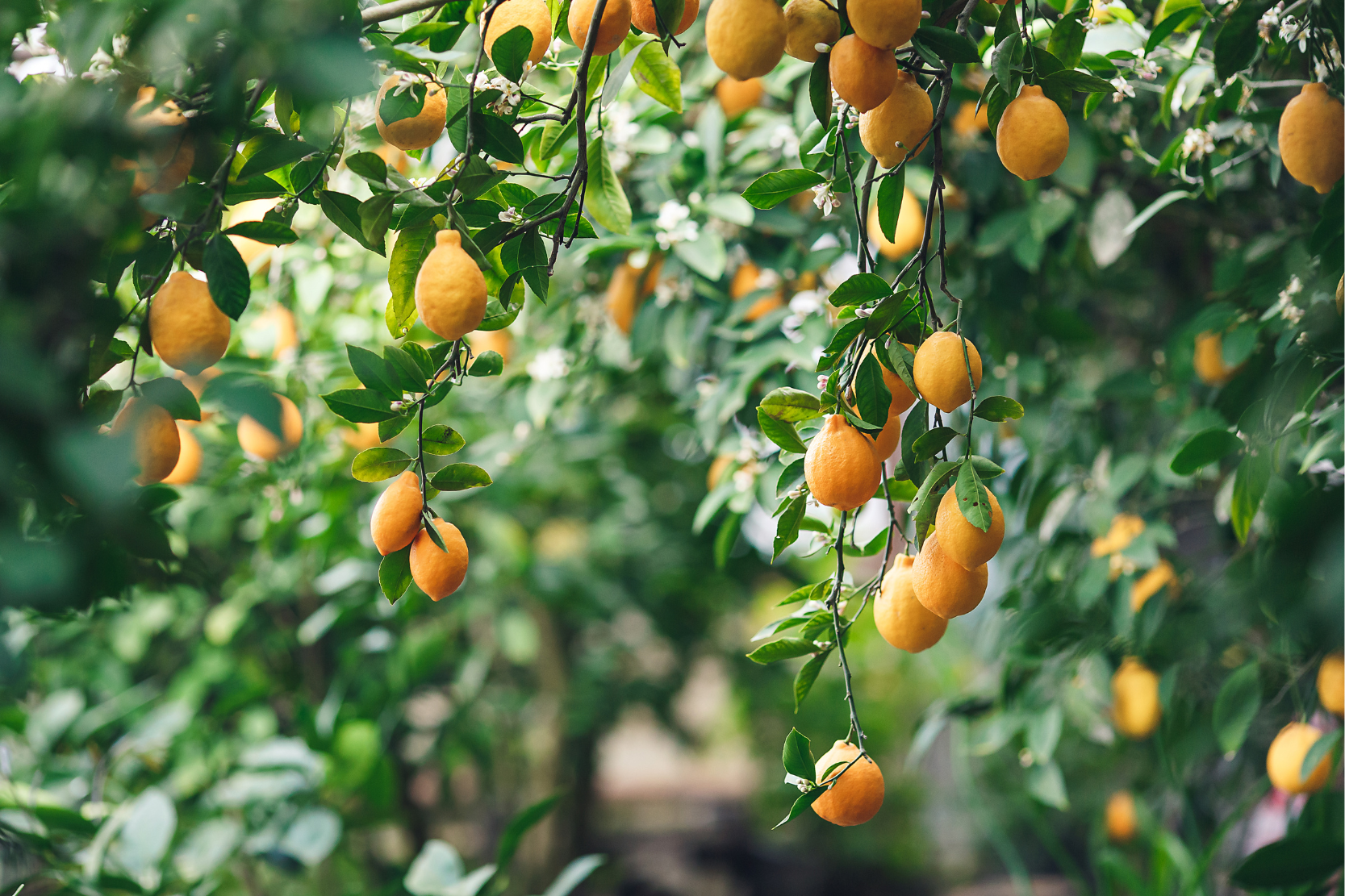
7. Fig Trees
Fig trees are an excellent option for gardeners with limited space. Varieties like ‘Brown Turkey’ and ‘Celeste’ are low-maintenance and highly productive. Figs are self-pollinating, meaning you only need one tree to produce fruit. They can also be grown in containers, making them perfect for patios or balconies.
Care Tips:
- Plant in a sunny location with good drainage.
- Water deeply but allow the soil to dry between waterings.
- Figs prefer protection from harsh winds, so plant near a wall or fence.
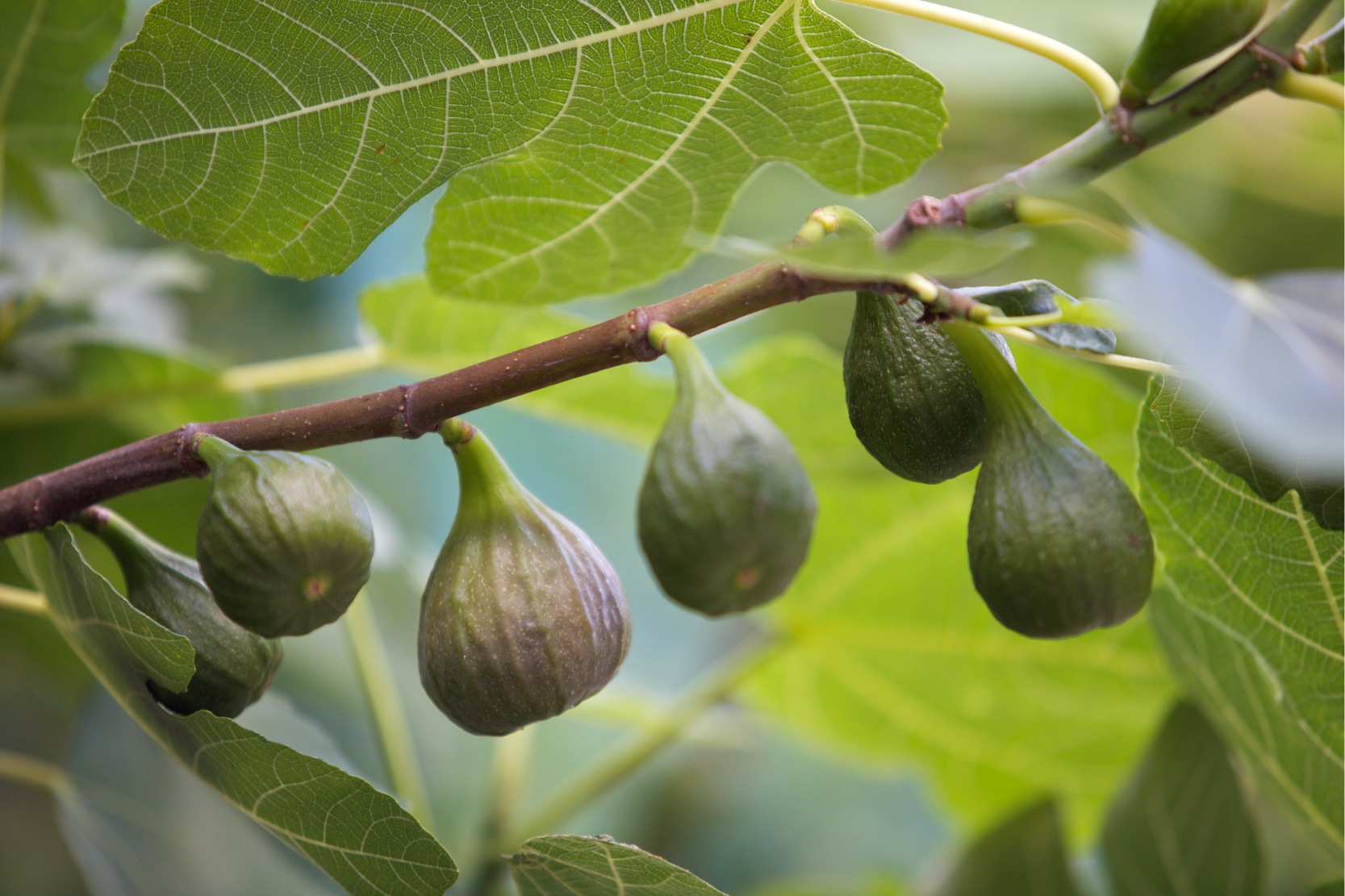
8. Cherry Trees
Dwarf cherry trees, such as ‘Stella’ and ‘Lapins’, are well-suited for small gardens. They produce sweet, juicy cherries that are perfect for fresh eating, baking, or preserving. Cherry trees are relatively low-maintenance, and their stunning spring blossoms make them a beautiful addition to any garden. Some varieties are self-pollinating, while others may require a second tree for pollination.
Care Tips:
- Plant in full sun and provide well-drained soil.
- Water regularly, especially during dry spells.
- Prune in late winter to maintain shape and promote healthy growth.
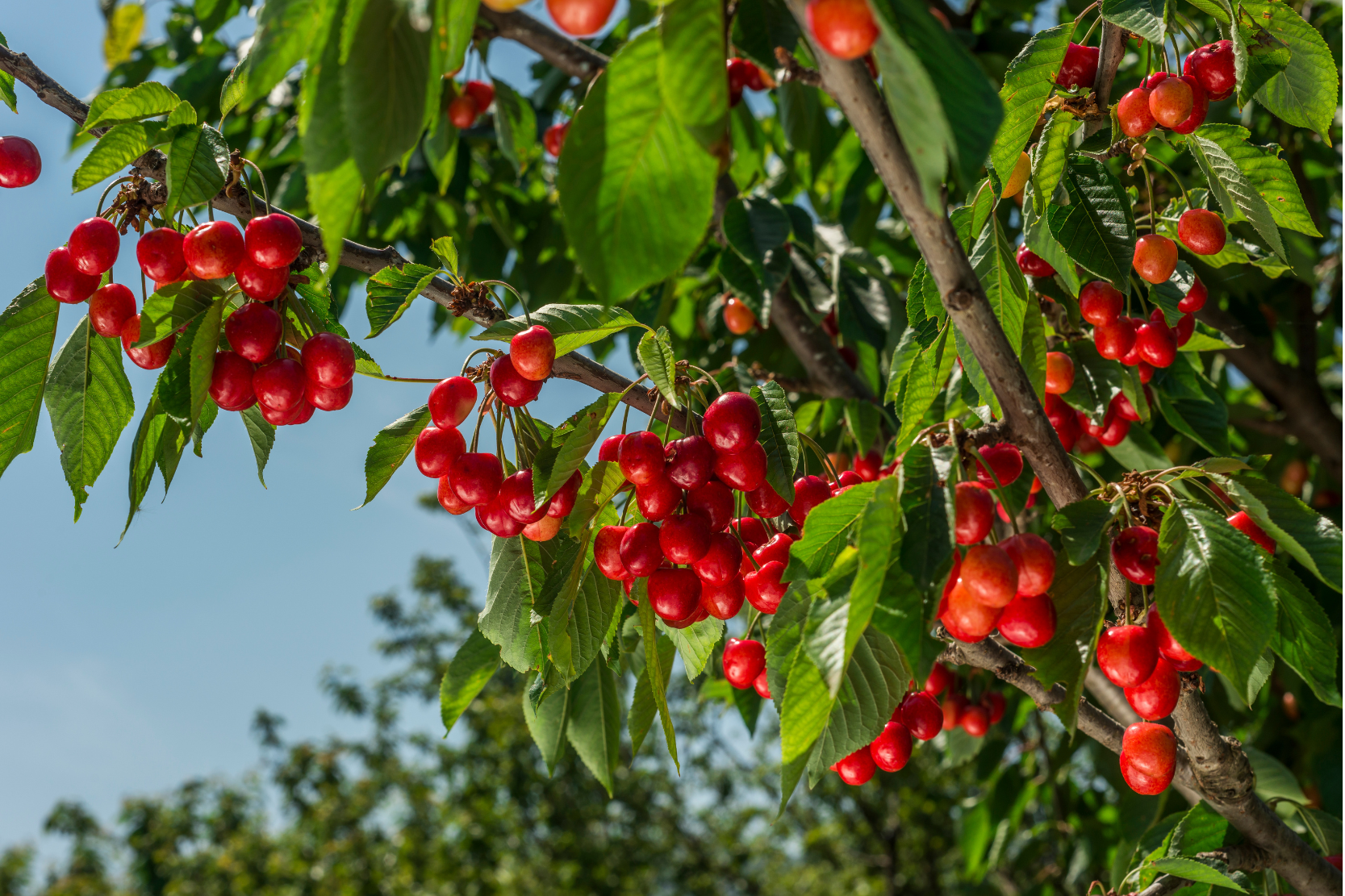
How to Care for Your Backyard Fruit Trees
Once you’ve chosen the right fruit trees for your garden, proper care is essential to ensure they thrive and produce a bountiful harvest. Here are some general tips for caring for your fruit trees:
For a more detailed guide on planting and caring for your fruit trees, check out this comprehensive resource from The OldFarmer’s Almanac, which covers everything from soil preparation to long-term maintenance.
Watering
Young fruit trees need regular, deep watering to establish their roots. Water once or twice a week, depending on your climate, ensuring the soil is moist but not waterlogged. Mature trees generally require less frequent watering but should be watered deeply during dry periods.
Fertilizing
Fruit trees benefit from regular fertilization, especially in the early spring before the growing season begins. Use a balanced fertilizer designed for fruit trees, and follow the manufacturer’s recommendations for application rates. Avoid over-fertilizing, as this can lead to excessive foliage growth at the expense of fruit production.
Growing fruit trees in your backyard not only provides fresh, organic produce but also contributes to a more sustainable lifestyle. If you’re interested in reducing your environmental impact further, check out our guide on SustainableGardening for eco-friendly practices that can make your garden more efficient and environmentally conscious.
Mulching
Apply a layer of organic mulch around the base of your fruit trees to help retain moisture, suppress weeds, and regulate soil temperature. Mulching also improves soil health over time as it breaks down and adds organic matter to the soil.
Pruning
Pruning is essential for maintaining the shape and health of your fruit trees. It helps improve air circulation, remove dead or diseased wood, and encourage better fruit production. Prune in late winter or early spring, before new growth starts, and focus on removing any crossed branches or excessive growth in the center of the tree.
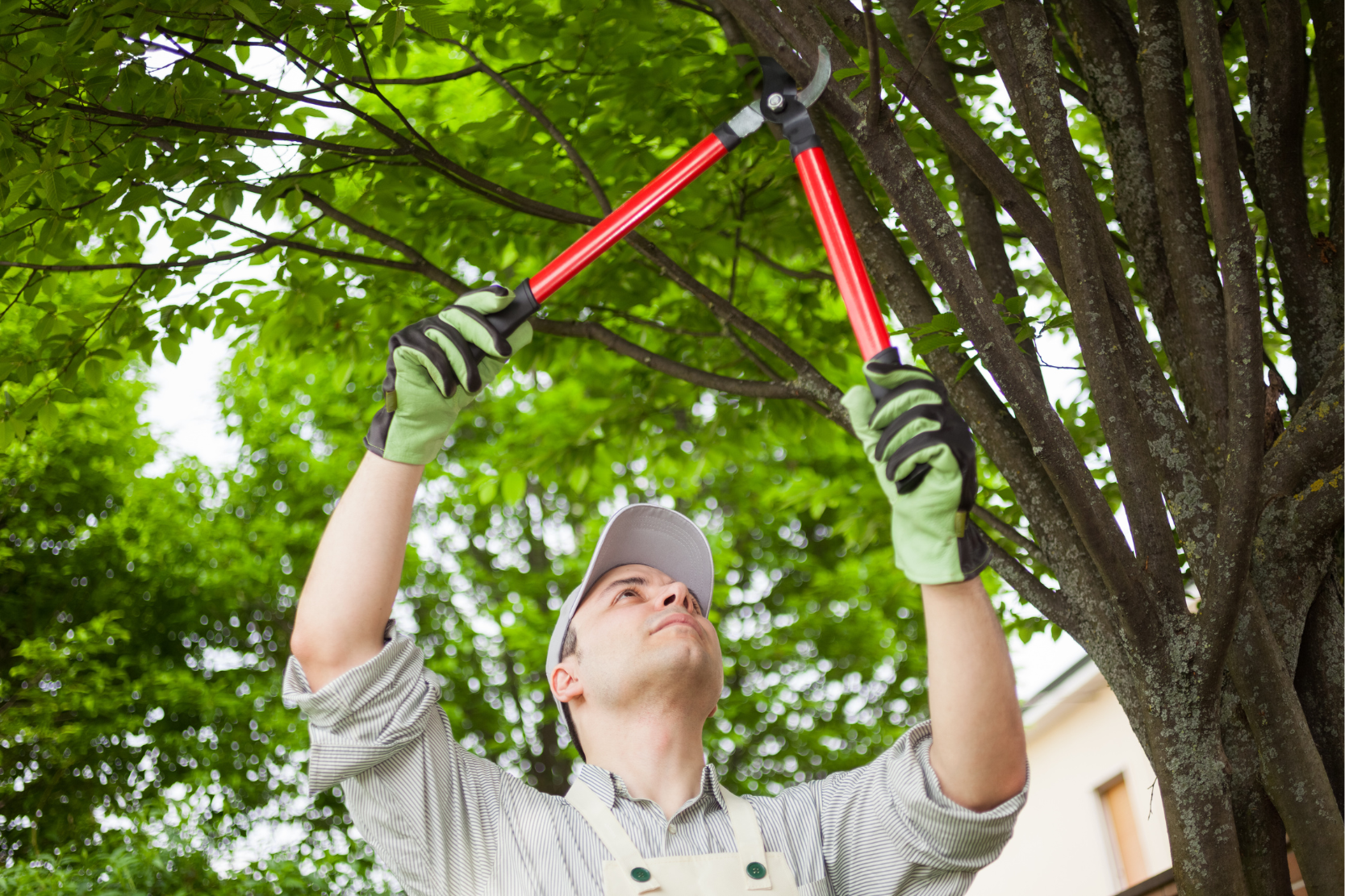
Pest and Disease Management
Fruit trees can be susceptible to pests and diseases, so regular monitoring is important. Common pests like aphids, mites, and caterpillars can be managed with organic insecticides or beneficial insects like ladybugs. Diseases such as fungal infections can often be prevented by ensuring good air circulation, proper watering practices, and the use of disease-resistant tree varieties.
When planning your fruit tree garden, consider using companion planting techniques to maximize your garden’s productivity and support healthier trees. Check out our guide on Companion Planting to learn how to pair your fruit trees with complementary plants that boost growth and repel pests.
Conclusion: Enjoy Fresh, Homegrown Fruit from Your Backyard
Growing fruit trees in your backyard is a wonderful way to enjoy fresh, organic fruit while enhancing the beauty of your garden. Whether you have a large yard or a small patio, there are fruit tree varieties that can thrive in your space. From apple and pear trees to figs and lemons, you can choose trees that suit your climate and garden size. With proper care, including regular watering, fertilizing, pruning, and pest management, your backyard fruit trees will provide delicious harvests for years to come. Start planting today and enjoy the many rewards of growing your own fruit!
If you’re looking for more specific advice on choosing and growing fruit trees in your garden, the Royal HorticulturalSociety offers expert recommendations for different varieties and climates.



